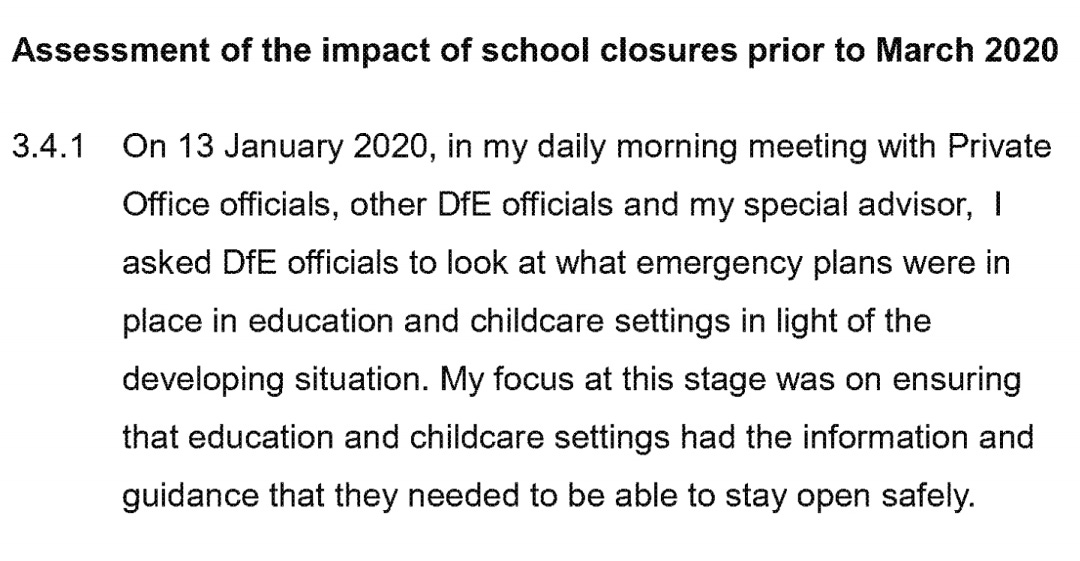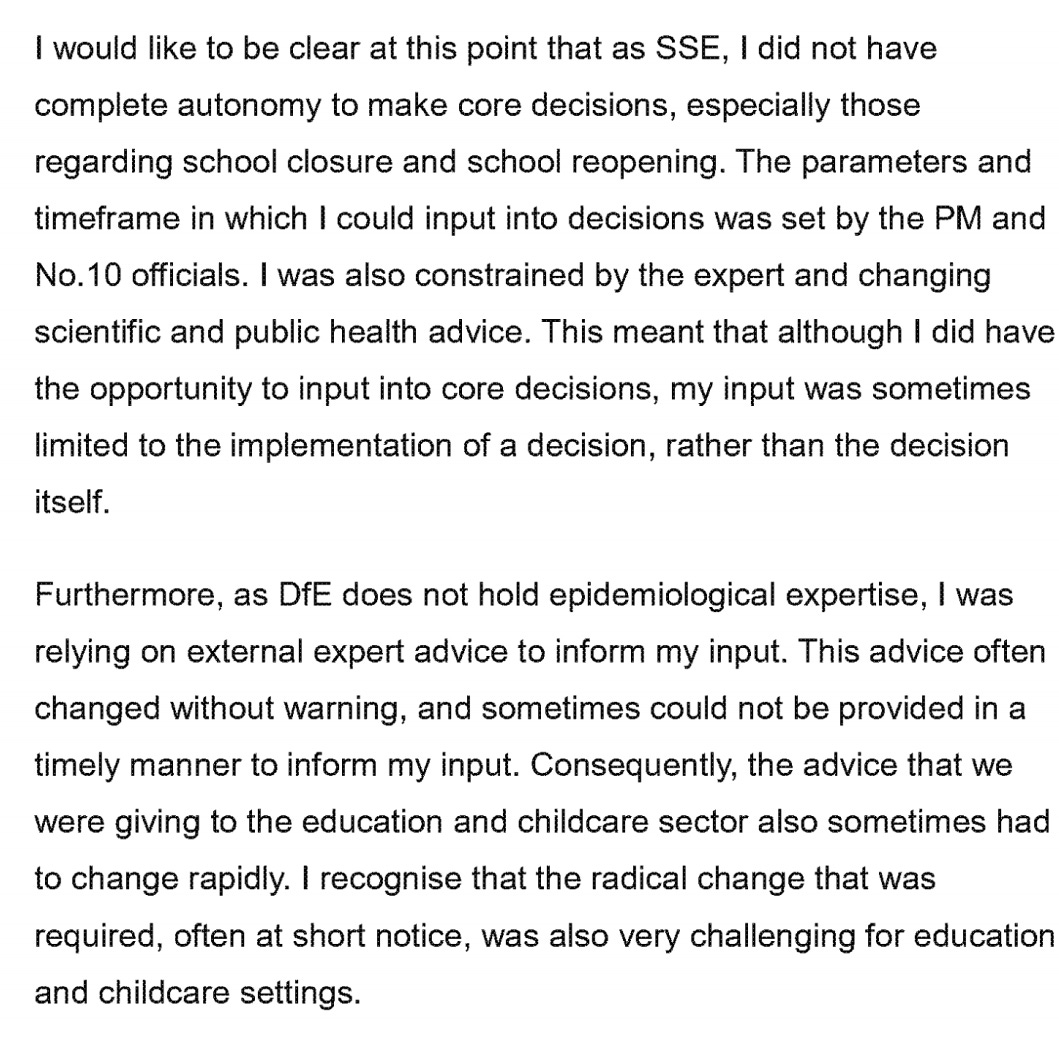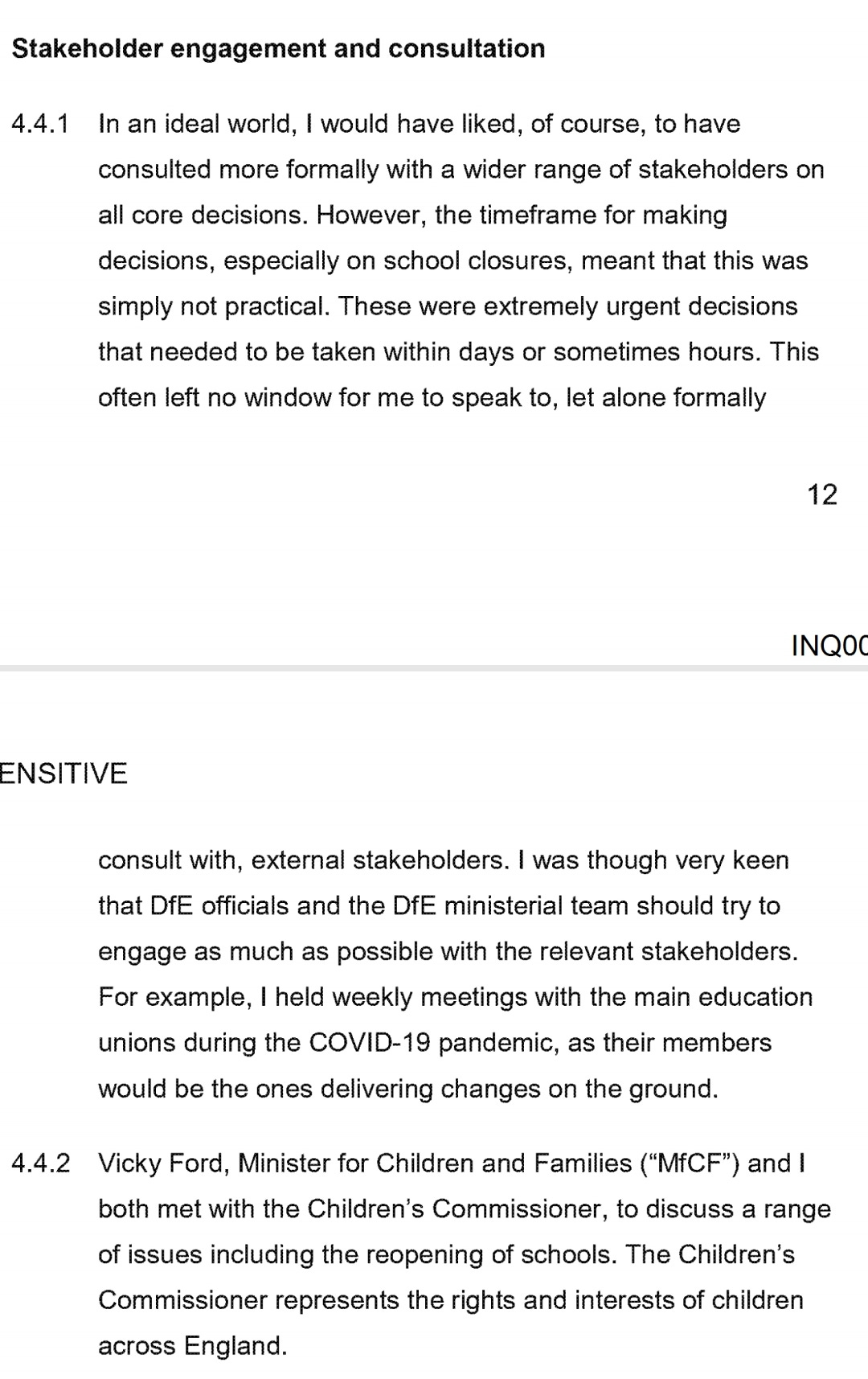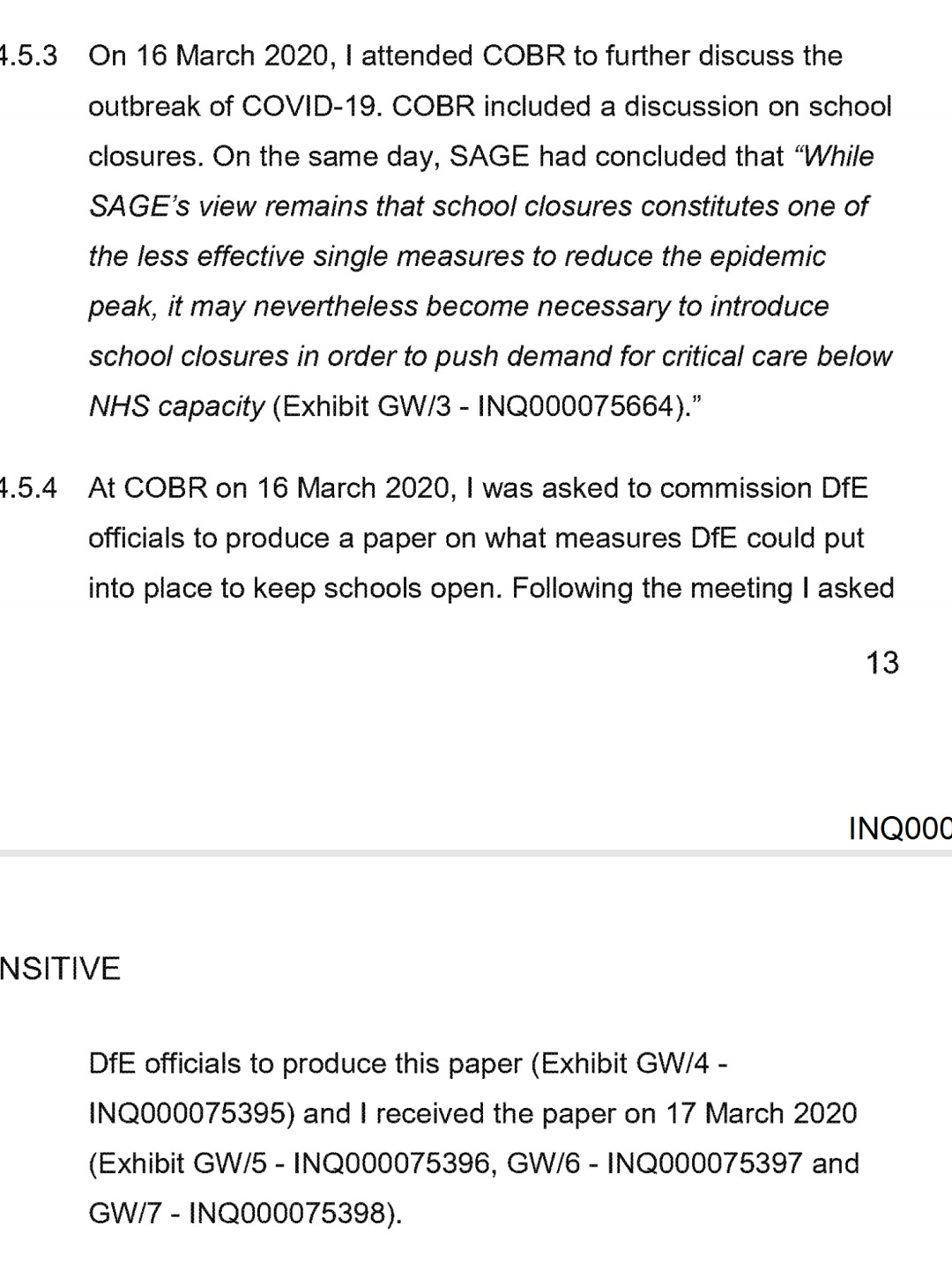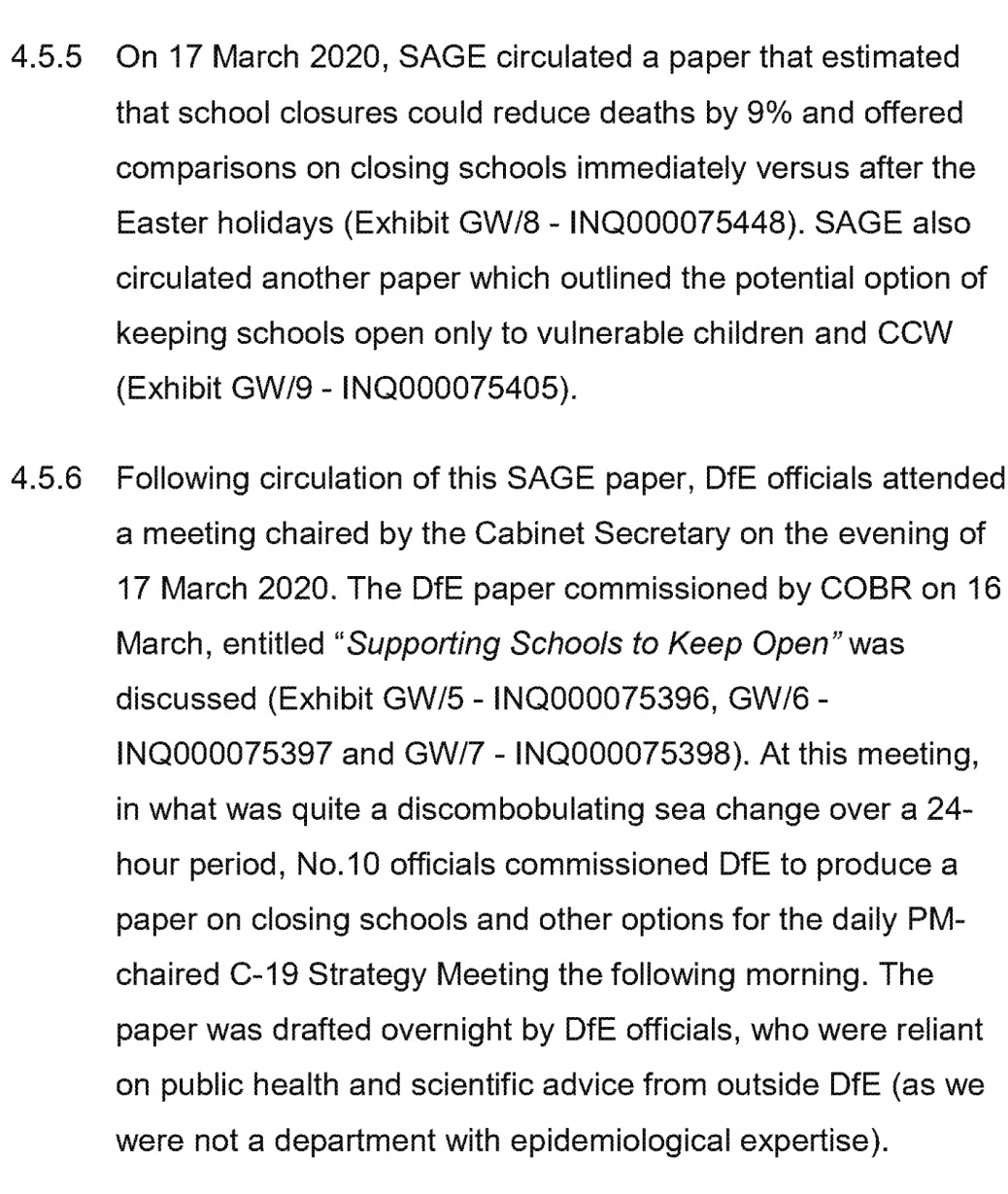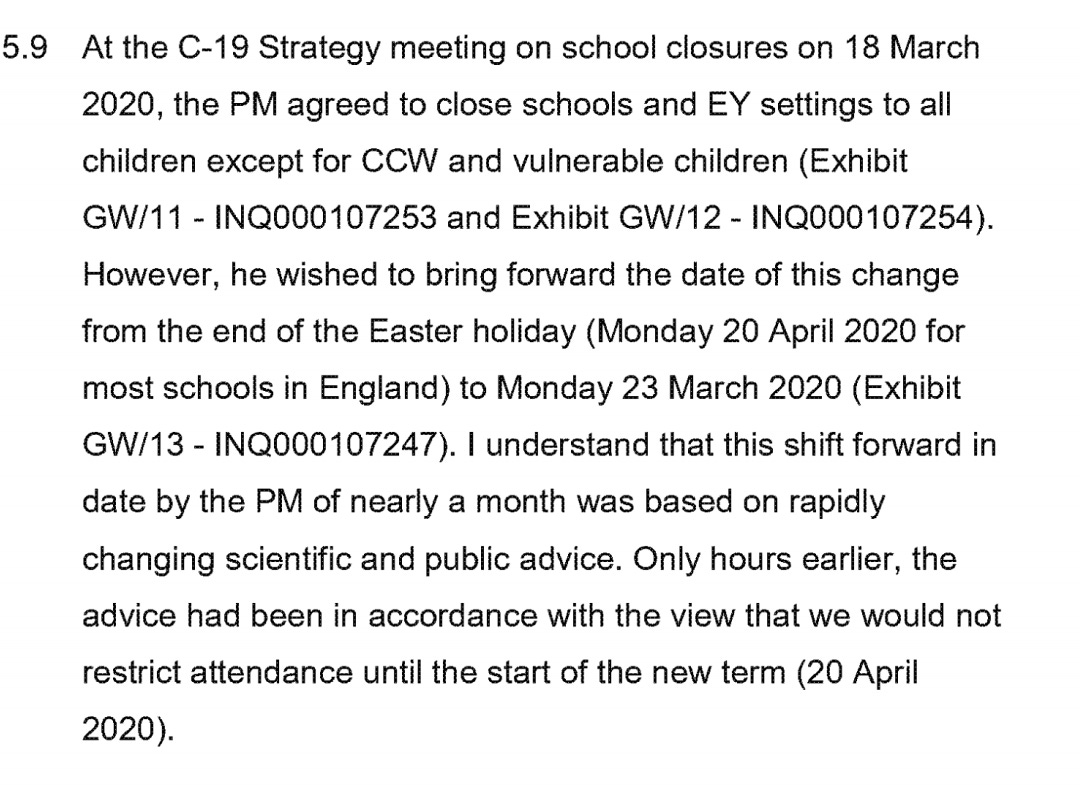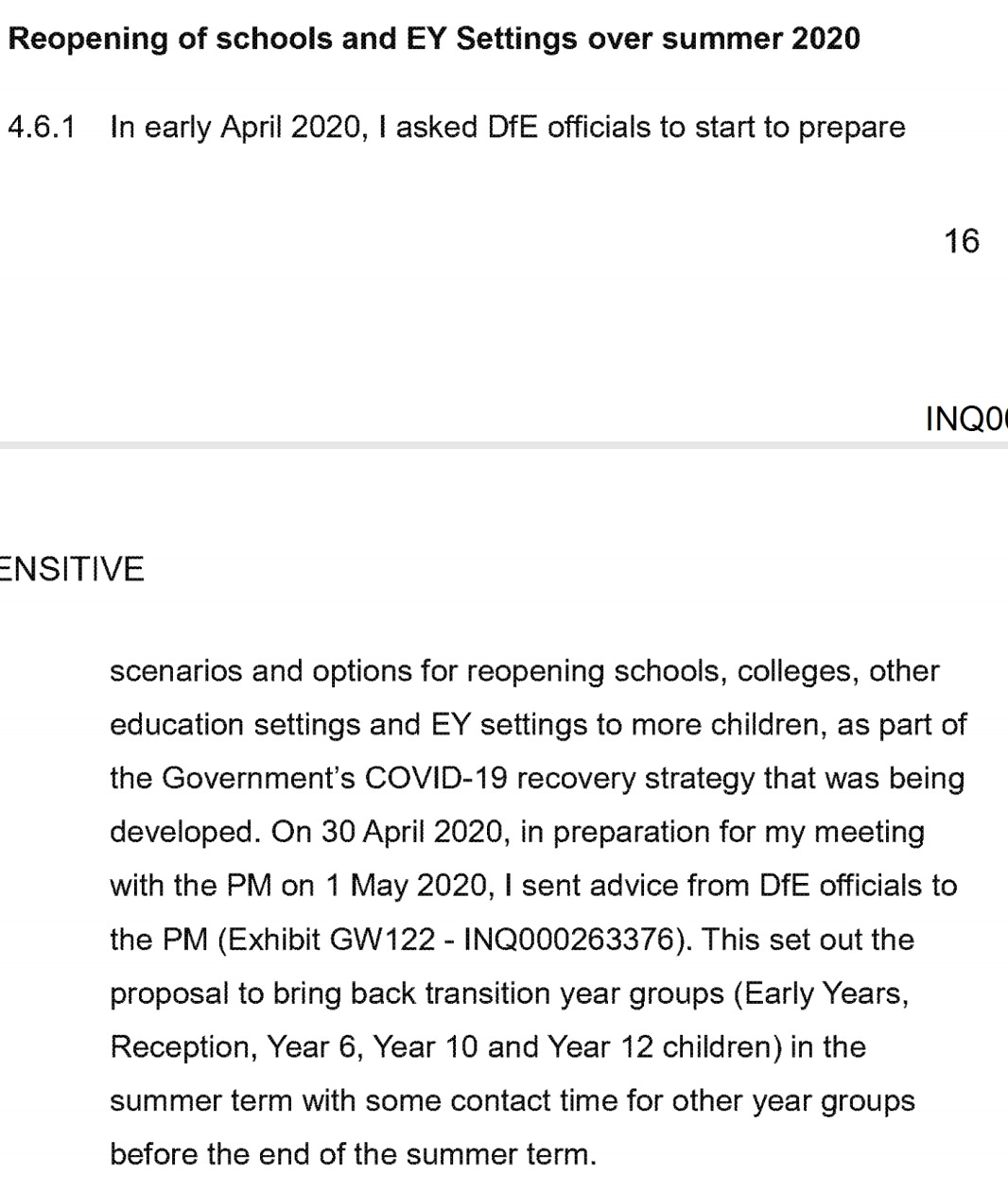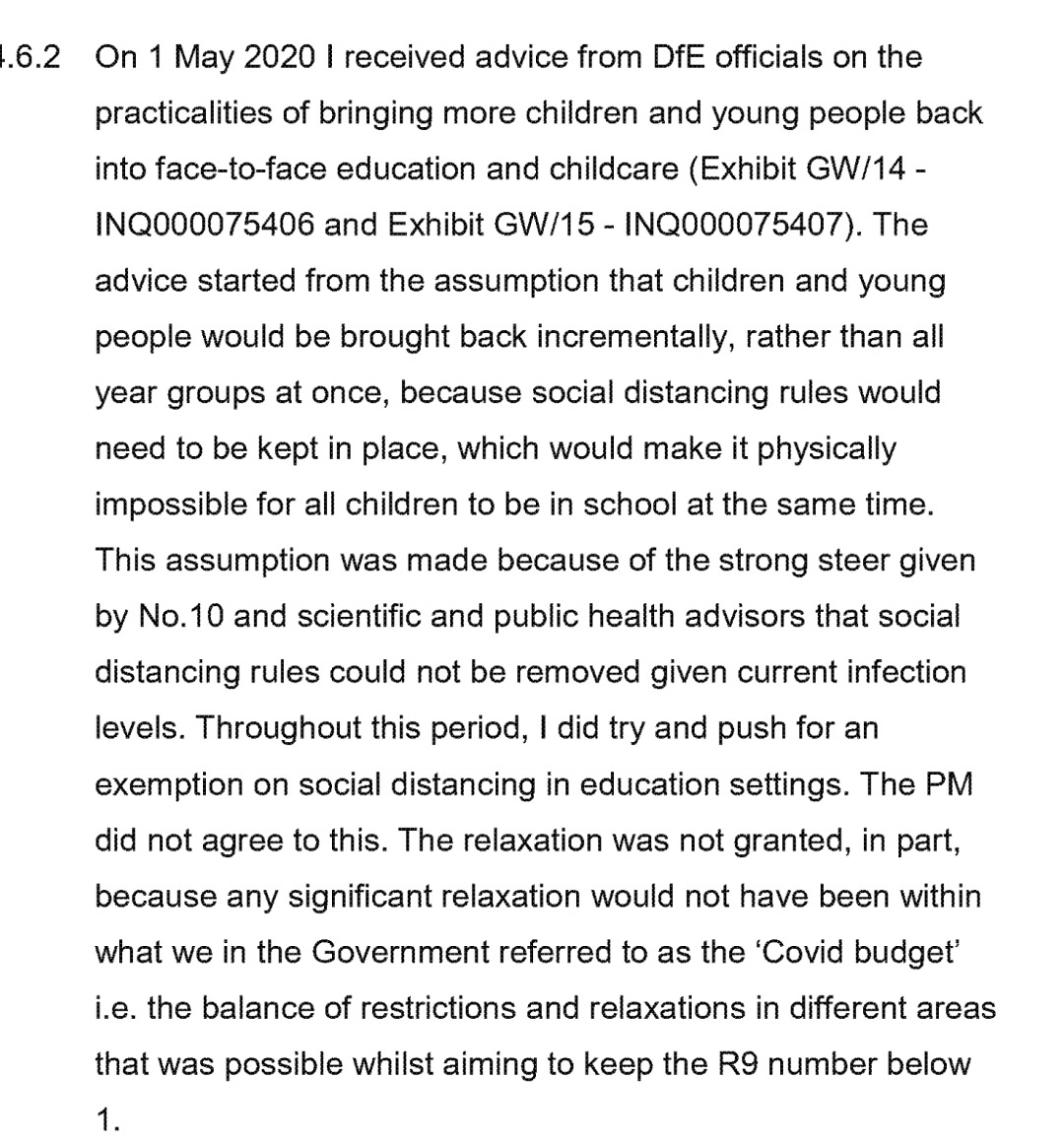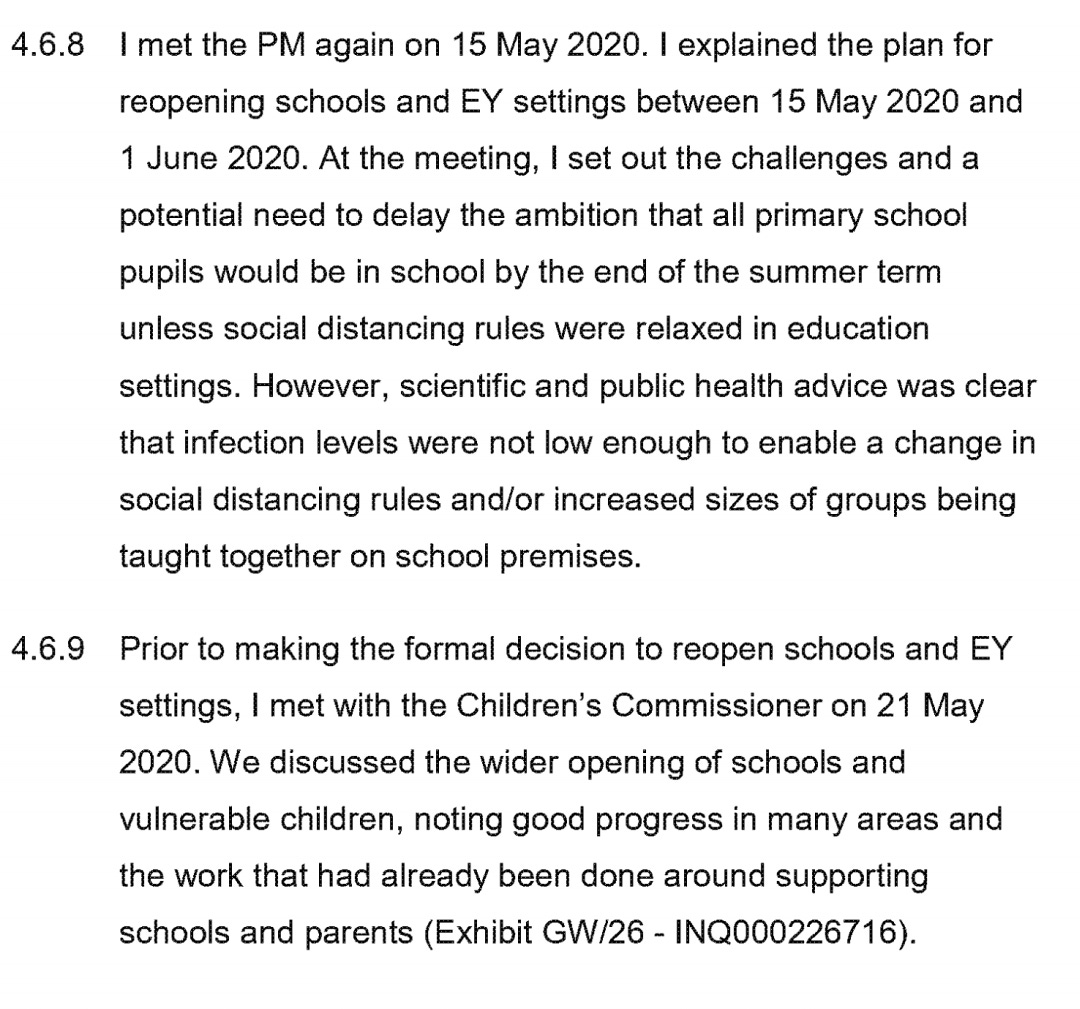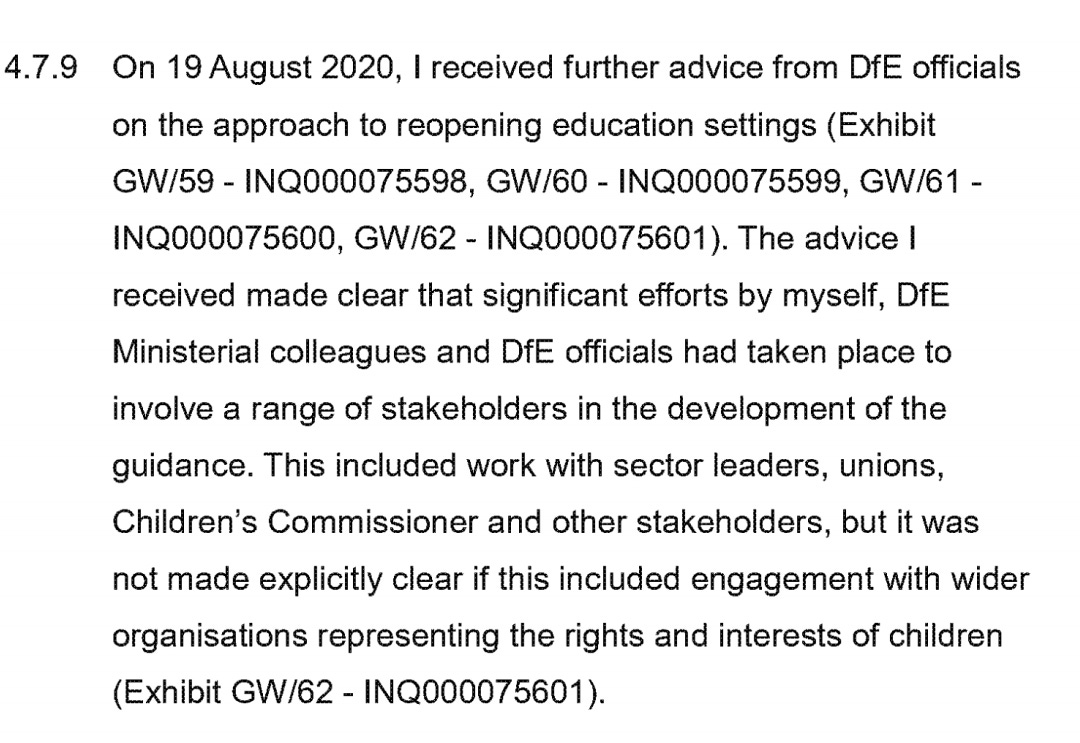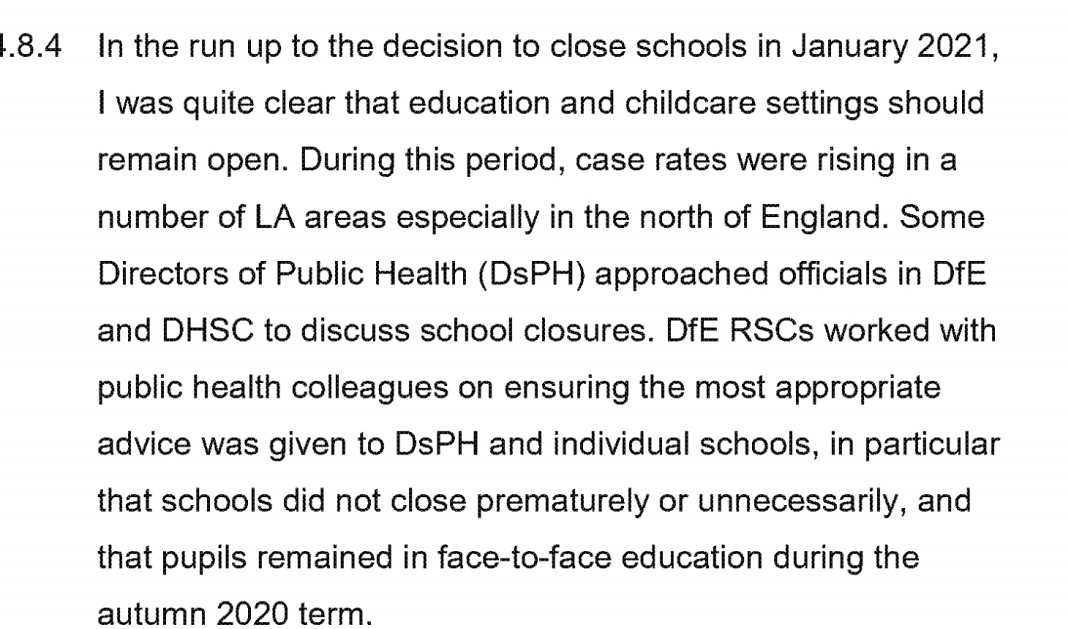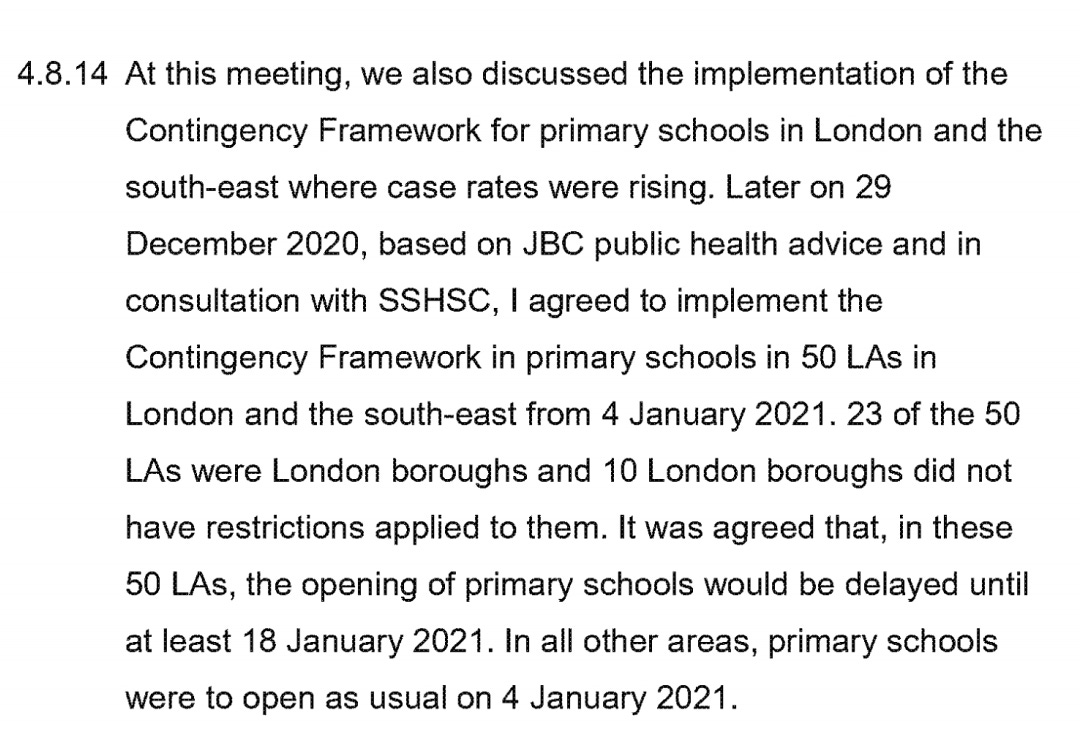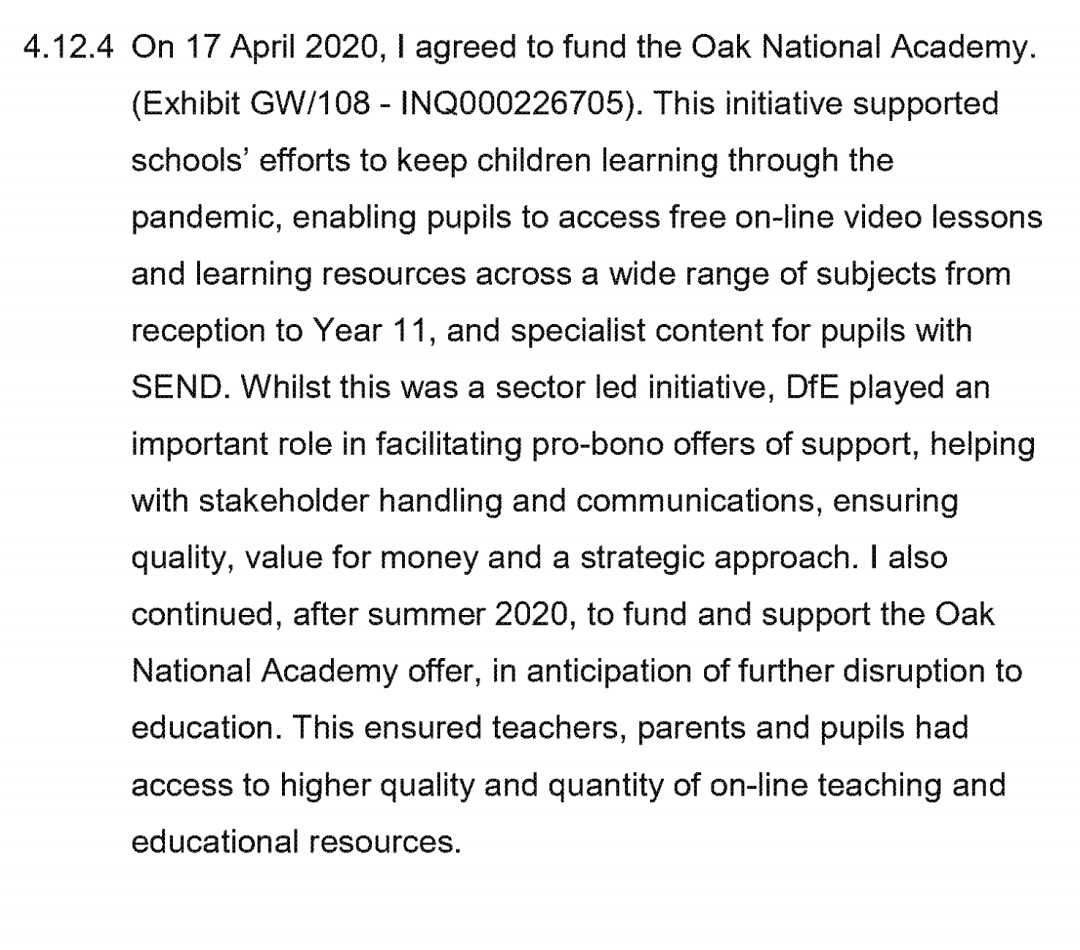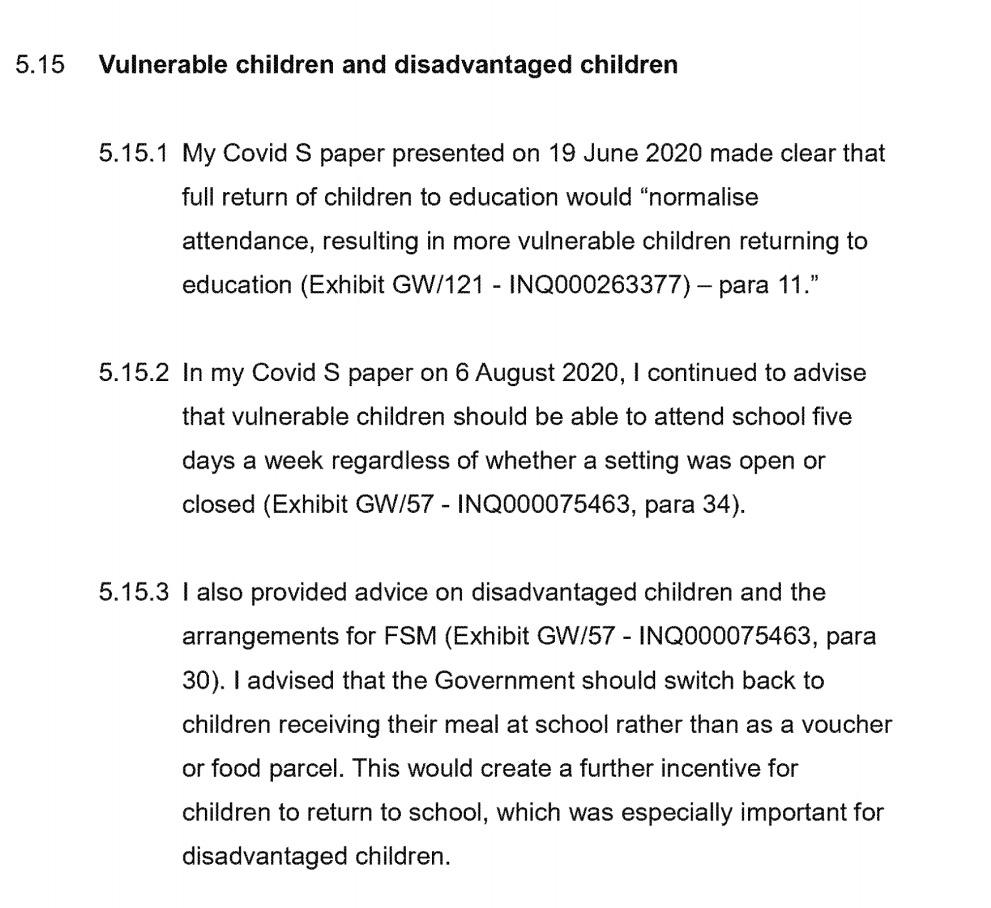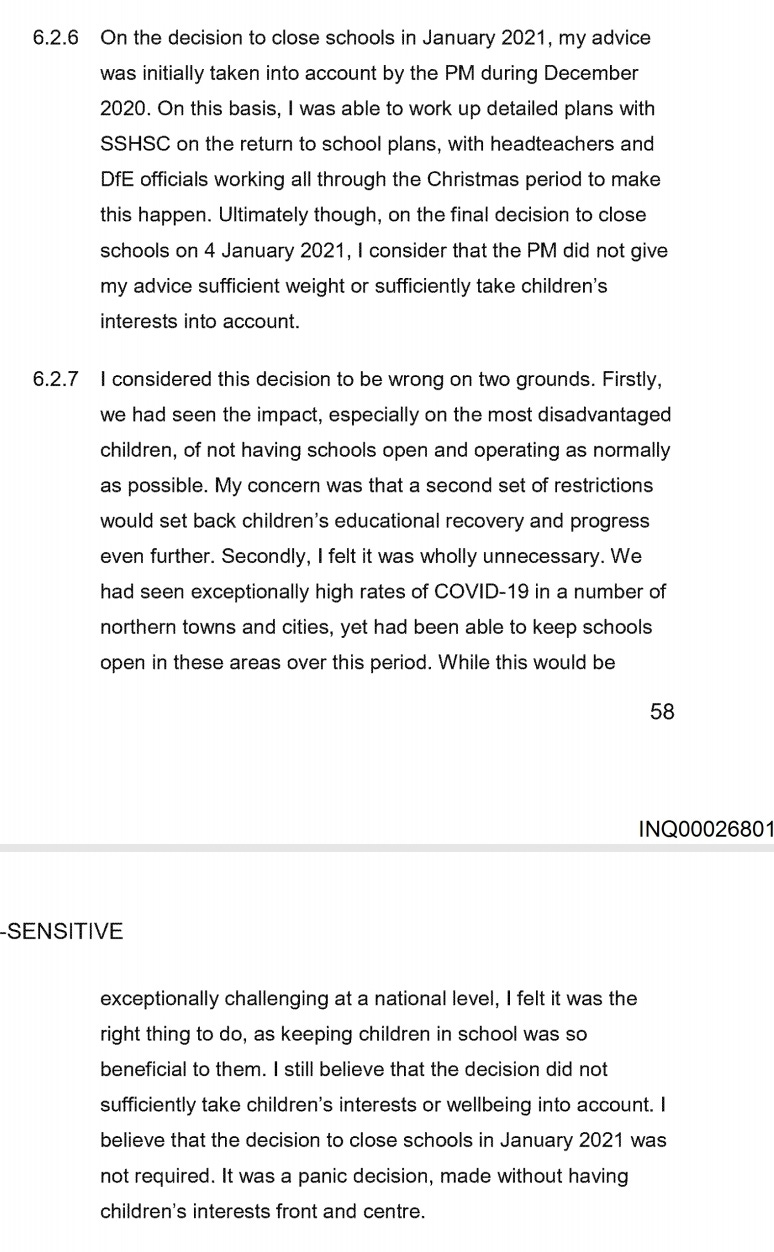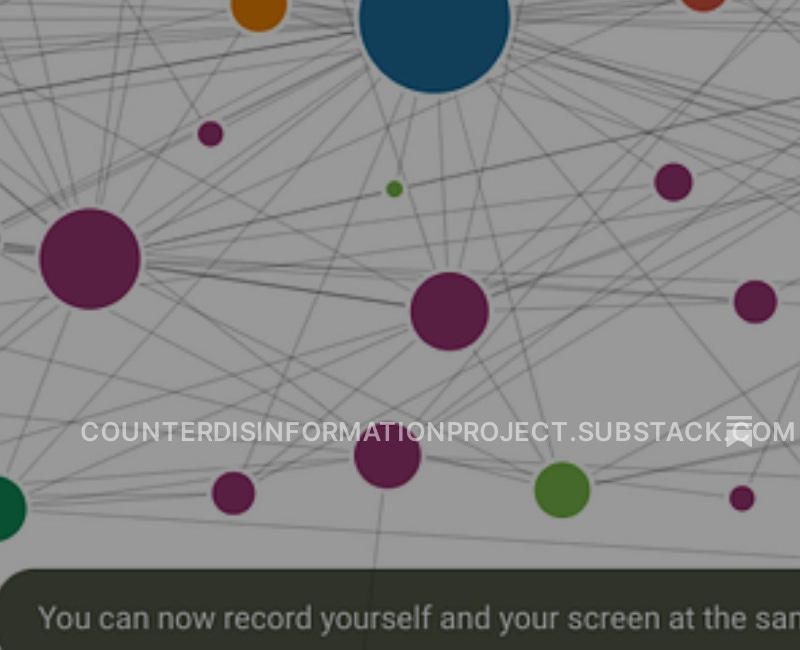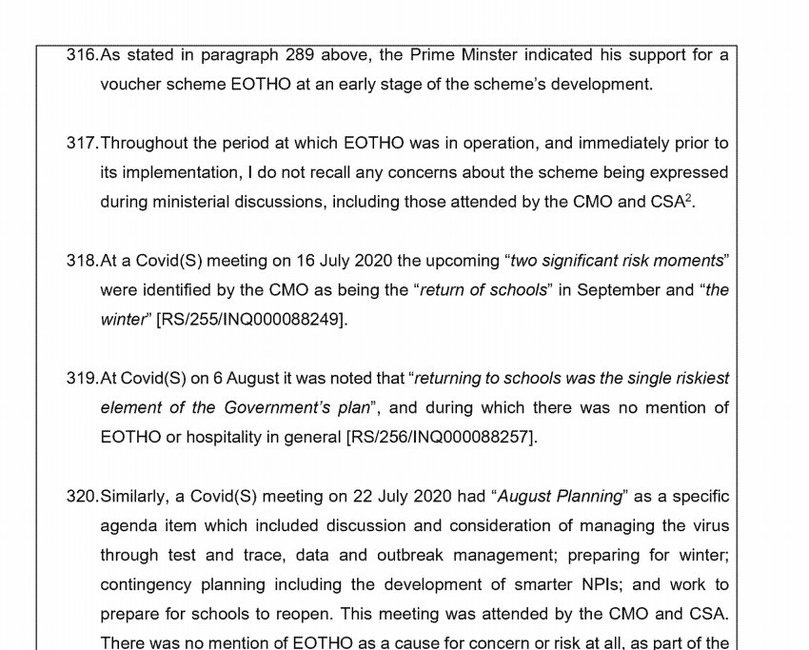UK Covid Inquiry: Gavin Williamson's Witness Statement
Education Secretary's account shows no concern for direct harms of covid and no consideration for at risk households
Before looking at Williamson's Witness Statement, its worth noting what it doesn’t include, no consideration from him regarding the harms of covid infection to the school population.
Nothing on the risk to workers
No acknowledgement of children in high risk groups, or of them living in households with high risk individuals
No consideration that certain communities and groups had worse health outcomes from covid infection
No mention of long covid
Doesn't mention the decision to tell shielding workers to return to in person education at the start of December
Masks, ventilation and air filtration are not mentioned
Williamson’s statement portrays a determination to keep all students in education, even when it wasn’t supported by the government’s scientific advice.
School closures were included in the draft Pandemic influenza bill but no precautionary planning or assessments were conducted,
Government acknowledged school closures were already occurring before the first lockdown, and became inevitable in March 2020
Refers to sharing planning with stakeholders, giving a false impression of collaboration
Johnson was warned his initial plans for students return in June 2020 were unworkable, Willamson called for social distancing to be removed
Williamson threatened councils with legal action to keep them open for the last few days of term in December and then due to high transmission rates initially told those schools to delay the start of term, before Johnson then declared a lockdown
Williamson thought schools could stay open throughout the Alpha wave at the start of 2021
Test and Trace, and the Ministry of Defence offered to support testing in schools for January 2021 but pulled out without much notice.
Focus was on reassuring messaging rather than addressing transmission in schools
Free School Meals vouchers were stopped to force disadvantaged children back into the classroom, without flexibility for clinically vulnerable households
Pre-pandemic planning
There have been many claims citing questionable papers that schools could have stayed open with minimal disruption even in the midst of the worst waves and that school closures had never been part of any pandemic planning, in particular the influenza plans that the UK initially followed.
Williamson explains that school closures were in fact included in the 2018 draft Pandemic Influenza Bill.
Pandemic planning Exercise Cygnus and DfE planning in December 2016 both considered the possibility of school closure in the context of staff absence rates.
Many schools were already struggling with staffing after clinically vulnerable and clinically extremely vulnerable workers were told to stay at home prior to lockdown, this is before absence rates due to possible covid infections are taken into account. If the government had tried to keep schools open over the peaks of the first and second waves, it's possible that the level of disruption to education could have been worse than it was during lockdown.
The DfE started looking at the potential impact of covid on education on 13 January, however the first specific guidance issued to schools was after the February half term when staff who had been on holiday to hotspots in Northern Italy were told to stay at home.
Despite school closures having been in the pandemic influenza plans, no planning was done at this time regarding what to do in the event of a lockdown.
Run up to lockdown
Williamson's focus was on keeping schools open as SAGE was not recommending closures. Still no planning was done for potential school closures, not even for instances where staff absence would force closures.
This focus changed on 17 March, however other evidence to the inquiry shows that on the evening of the 12 March it had been realised by the government’s advisors that the strategy of simply allowing the virus to pass through the population would cause the NHS to collapse.
Why was there a delay between this realisation and the DfE being told to change focus?
Williamson was outside of Johnson's inner circle, it's possible he wasn't fully aware of the changing situation. This is the impression he gives throughout the witness statement.
Without the precautionary planning that should have begun in January, the DfE was not prepared for a lockdown, and so there was no time for assessments on the impact of lockdowns or planning for mitigations.
It's worth noting that for weeks the education unions had been offering to collaborate with the DfE in preparing for a potential lockdown. This included drawing up lists of keyworker occupations, supporting vulnerable students, remote learning options, how to continue free school meals and providing food for others in the community.
These offers were ignored because the government didn't expect schools to close, however these offers were still rejected when the government began to prepare for a lockdown.
Williamson paints a portrait of conflict between prioritising vulnerable students vs keyworkers, but schools remained open to both groups, a suggestion the unions had made weeks before. Despite having the time to prepare a list of keyworker occupations, the list arrived too late for schools to inform parents, fortunately school leaders had used their initiative, creating their own lists and had contacted parents.
Williamson explains how he wasn't in control of education policy.
Williamson says he wishes he could have consulted more with stakeholders, citing regular meetings with the education unions. However the unions found the meetings generally unconstructive, with the DfE providing no information regarding their planning, the government and elements of the media then falsely accused the unions of being unwilling to collaborate, when in reality the government simply wanted the unions to rubber stamp policies that had been drawn up without consultation.
While the unions and school leaders found out about changes in policy at the same time as the rest of the general public, the Children’s Commissioner was privy to DfE planning. The group UsForThem which campaigned against all measures; including vaccination children, and advocated for children to have the “benefits” of infection were also informed of policy such as the return of schools in September 2020 before the general public. The group has been publicly supported by Anne Longfield, the Children’s Commissioner in 2020 including a joint applications for core participant status in the inquiry.
According to Williamson SAGE first considered school closures on the 16 March. Williamson focused on keeping schools open, here and elsewhere he makes the impression he was willing to do anything to keep schools open, although he didn't have this conversation with the unions.
SAGE predicted closing schools would reduce the death toll by around 9%.
There was a discussion on if education should close to most students immediately or after the Easter holidays. Williamson wanted to keep schools open for the week up to the holidays.
The evening of 17 March DfE were told to draw up plans for school closures by the next morning.
Williamson sets out three reasons for the U-turn on schools, there was the need to reduce transmission, but there was also the simple reality that schools were already closing because of staffing shortages, and an increasing number of families were already withdrawing their students. This is the scenario Exercise Cygnus had highlighted the need to prepare for, and what the unions had been warning about. This is the reality those who argue that school closures were unnecessary refuse to acknowledge, once the virus was out of control school closures became inevitable. Demanding education stayed open would have resulted in less provision for vulnerable students and the children of keyworkers.
On the morning of 18 March the government was still telling the public and unions they had no plans to close schools.
Increasing student numbers
Planning began in April to bring back students, the unions were told at the time that there was no planning taking place.
Williamson pushed for education to be exempt from the social distancing measures of two metres that were in place at the time. No 10 wouldn’t agree to this due to scientific advice.
At the start of lockdown the unions had suggested making use of unused public spaces and ordering temporary buildings for additional teaching space, but there is no evidence Williamson pursued these options. The unions had also suggested copying other countries which were using rota’s to allow all students some time in school. According to the Children’s Commissioner at the time, rota’s had been quickly dismissed and weren’t considered by the government despite SAGE having modelled a number of scenarios which used rotas.
The announcement on 9 May that all primary and many secondary students would return before the summer was made unilaterally by Johnson. Williamson knew at the time this would be impossible unless social distancing measures were removed, he believes Johnson had been warned this was the case before making the announcement.
While Williamson says he knew this at the time he was quick to criticise in the media those who also highlighted the issues with Johnson’s plans, and when the plans had to be abandoned the unions were blamed.
Williamson and the rest of the government had assured the public at the time that these plans were following the science.
Why did Johnson set out a plan that he knew wasn't possible to achieve? Was he being hopefully optimistic that cases would come down faster than predicted, or was he telling the newspapers what they wanted to hear knowing that the unions would be blamed when he had to scale back the plans? Williamson also faced criticism in the media for not being strong enough against the unions.
15 May Williamson again pushed for social distancing to be removed. The Children’s Commissioner was also consulted, in her witness statement Anne Longfield claims her intervention in the media criticising Williamson and the unions had been a turning point that brought both parties together, this wasn’t the case, Johnson had already decided on a plan.
Williamson description of wider stakeholder engagement sounds fairly collegiate, bit in reality Johnson had his plan and Williamson was telling others there was no room for change.
Williamson also fails to mention the meeting between the government's scientific advisors and the unions that he pulled out of attending at the last minute. The governments advisors gave an uncertain picture of transmission and the risk in education settings.
10 June, Johnson abandoned his original plans for returning students to school. If the government had allowed planning for rotas then all students would still have been able to have time in school.
September 2020 Return
Planning began at the start of May on returning all students to school in September.
While the DfE claims it was sharing draft guidance with stakeholders, the unions were being told no plans were being put in place. The trusted stakeholders group omitted many important stakeholders, there was an school leaders advisory group which consisted of a small group of mainly multi academy trust and faith school leaders.
Williamson claims that he involved a range of stakeholders in developing the guidance, he makes it sound as if the unions were involved in this. There were meetings between the DfE and the unions, however no information on draft guidance was shared with the unions, just like school leaders they had to wait for the guidance to be published on the DfE website to know what it contained.
According to her witness statement the Children’s Commissioner was consulted and given advance notice of the guidance. For inexplicable reasons only onegroup claiming to represent parents and children were given prior notification of the September plans and that was the newly formed group UsForThem who were threatening the government with legal action.
January 2021 Lockdown
The government had no intention of further school closures. Williamson does not go into any detail regarding the decision not to include schools in the November 2020 lockdown despite SAGE minutes from the time showing the government was warned that transmission wasn't likely to be reduced by enough without schools being included.
The Contingency Framework was published just before schools returned, after a summer holidays of calls for the government to have a plan B in place. Despite many schools struggling with staff absences Williamson never used the Contingency Framework. Instead taking legal action against Greenwich Council to keep schools open for the last three days of term, an FOI request calling for the evidence behind this decision was answered with an unconvincing interpretation of the evidence by Deputy CMO Jenny Harries.
It appears the Contingency Framework was designed to give the impression that the government was willing to act without there being any intention to actually use it, even without the framework being enacted schools still have to close for periods due to lack of staff.
Williamson wanted to keep schools open regardless of the Alpha variant being identified. He gives the impression that he was willing to do everything nesecery to keep schools open however other evidence provided to the inquiry shows Williamson opposed the introduction of masks to the classroom because he didn’t want to be seen as giving in to the demands of the unions. This demonstrates the influence anti-mask elements of the right wing media had on policy decisions. Williamson also didn’t provide the required additional funding required for covid measures or increased use of supply staff leading to stretched budgets and a lack of resources.
Williamson opposed including schools in the third lockdown at the start of January 2021. Calls had been made throughout the summer for Williamson to invest in better ventilation and air filtration in schools, these requests were ignored.
Williamson appears to have been relying on the roll out of mass testing in schools to keep them open, however it appears the MOD and Test and Trace reneged on promises to support this programme, but this shouldn’t come as a surprise as Test and Trace collapsed in schools in the autumn term leaving school leaders to do their own contact tracing. The management of Test and Trace under Dido Harding was clearly inadequate.
Williamson was willing to use the Contingency Framework to stagger returns in the south east to get students back into school for the start of the new term. Hotspot areas in the rest of the country questioned why they weren't treated the same as the south east.
1 January the decision was decided to extend closures of primary schools to the rest of London. Two weeks before Williamson had threatened some of these boroughs with court action to keep them open. Williamson does not address this contradiction, standing by both decisions.
4 January Johnson announced a lockdown which included schools, Williamson opposed this measure. Williamson does not mention the many thousands of primary school workers who refused to come into school using Section 44 of the Employment Rights Act 1996, stating that their workplaces were unsafe.
It appears the government was already considering a lockdown on 4 January, only Johnson knows how much impact the workers walkout had on his decision. However, this did mean once again the unions were blamed by elements of the media rather than the failure to address transmission much earlier in the wave.
Did the government decide to wait until after unions advised their members in order to shift blame?
Williamson thinking schools could stay open in the midst of what would become the deadliest wave of the pandemic calls into question his attitude towards the safety of the school population.
March Schools Reopening
It's worth noting that schools never fully closed, they were partially open, and in the 2021 lockdown the eligibility was increased leading to a considerably greater number of students in school. Again Williamson gives the impression that plans were developed with close cooperation with many stakeholders including the unions. The unions put forward proposals but none of the government’s planning was shared with them.
Initially the plan had been for all students to return by half-term but this wasn’t possible due to scientific advice regarding case numbers. Once again if the government had considered rota’s all students could have spent some time in school.
Oak Academy
The government decided to back an initiative to provide a remote learning option. Williamson doesn’t address the controversies around Oak Academy, that it was set up by those who are considered favoured faces by the DfE while other pre-existing organisations that offered to work with the DfE were ignored. Oak has since grown into a government sponsored institution involved in rolling out DfE initiatives.
Williamson also does not mention the scandal around the contract to provide laptops and routers to disadvantaged students. Promises to provide online access to all students was never achieved, and there were many problems with schools receiving devices that were faulty, not up to basic specifications and in some cases laden with computer viruses. The owner of the company in question did have links to the Conservative Party.
Vulnerable, disadvantaged and minority ethnic children
Vulnerable as a DfE term does not refer to children who are in high risk groups for covid, it covers vulnerable in terms such as safeguarding, special educational needs and children in care.
The DfE and Children’s Commissioner were concerned that the school attendence of vulnerable students during lockdown was lower than expected. When it came to CEV families, the DfE sought to alleviate their concerns with words rather than addressing the issues with action.
Instead there was a focus on normalising attendance. When it came to increasing the attendance of disadvantaged pupils Williamson decided to stop free school meals vouchers. While at first glance this might seem reasonable, its worth considering the impact on disadvantaged CEV households, particularly the immunocompromised who were left with the choice of increased living costs or sending their children into settings where the likelihood of infection was high.
This is the main issue with the DfE’s lack of consideration for CEV households, a lack of flexibility and understanding put these families into difficult situations that could have been mitigated, however the rush to return to normality left these families behind. These families at high risk to covid have found themselves pursued by the courts.
When it comes to children from the DfE’s definition of minority ethnic backgrounds there is no acknowledgement that statistics show that certain communities were at higher risk of severe outcomes from covid infection. These communities also had less confidence in gvernment messaging.
This is the only part of Williamson’s witness statement that mentions the Back to School campaign that ran throughout August 2020. The campaign ran ads ad paid media personalities and influencers to persuade the public that schools were safe. The campaign misrepresented the environment that students would be returing through, claiming social distancing would be enforced, that ventilation in schools had improved (they were told to open a window, where possible) and even showed pictures of children wearing masks in the classroom when the DfE guidance actually prevented schools from recommending this.
As with CEV households there was no effort to reduce transmission in education (even non restrictive measures like investing in ventilation and filtration), instead the focus was entirely on reassuring messaging.
Williamson’s Reflections
The first wave and closures were inevitable.
Williamson believes schools could have ridden the Alpha wave and stayed open, for some reason he doesn’t believe staff absence and parents choosing to withdraw their children wouldn’t have happened like it did in the first wave. This was already happening in December, and the peak of the wave almost reached 2,000 deaths in a day.
Williamson cites schools in northern cities which had stayed open despite high transmission rates, but the reality is many of these schools spent time nominally open with many year groups regularly remote learning due to staffing shortages.
Lessons Learned
Considering lessons learned Williamson fails to acknowledge that the English education system he presided over was ill prepared for a pandemic with staffing shortages, larger class sizes and smaller classrooms than comparable countries, and with many classrooms having poor air quality. Williamson doesn’t suggest addressing these measures would better pandemic proof education, instead he focuses on determination alone keeping schools open and having planning in place in case they do have to close.
Williamson suggests having a clear framework regarding the threshold for school closures would be helpful, however this is what the Contingency Framework was supposed to have provided, and the government had published two roadmaps out of restrictions from the Joint Biosecurity Centre that were meant to be reversible, however when the requirements of the alert levels didn’t match Johnson’s intentions they were simply ignored.
14. DfE's FOI response: Williamson threatening Greenwich with court action - Dec 2020
Part 14 of this review examines the government's response when asked for the evidence the DfE claimed supported the decision to threaten councils with court action. DfE didn’t provide the evidence requested False claims about schools being controlled environments
Covid Inquiry: Sunetra Gupta's witness statement
There has been a considerable effort in much of the media to distort public perception of the UK Covid Inquiry, arguments are being made that it isn’t addressing the effectiveness of measures, the harms of lockdown and needs to take the views of alternative experts. Snippets of statements from the hearing have been quoted as if they were gotcha moments …
UK Covid Inquiry exposes shocking Government negligence
This piece was orginaly published on LabourHub on 8 November https://labourhub.org.uk/2023/11/08/covid-inquiry-exposes-shocking-government-negligence/ With the Covid Inquiry now fully underway, it’s been interesting to see the reaction in the media as details emerge of the chaos, negligence and callousness that was rampant behind the doors of Number 10. M…
Rewriting history, the politics of the "Lockdown Files"
Just as the UKs Covid Inquiry finally gets going the Telegraph has launched its Lockdown Files which has swamped the news agenda. Selective quoting spliced with sceptic “science” is being used by the Telegraph to set out the narrative that the Great Barrington Declaration was correct, that no measures worked and we should have followed a strategy of mas…
"Schools was the single riskiest element" Sunak's Inquiry witness statement, August 2020
A single passage of Prime Minister Sunak’s witness statement to the UK Covid Inquiry has been released. The media focus has been on his comments about the Eat Out to Help Out scheme, Sunak says the government’s experts didn’t express concerns about the scheme, however during their hearings the government’s most senior advisers said they hadn’t been cons…
UK Inquiry: Long COVID Oversight Board 22/06/2021
A section from the minutes of the Long COVID Oversight Board meeting held on the 22/06/2021 which has been released by the UK's Covid Inquiry. For the first time we get a peak of the conversations informing the government. Q,Any good evidence on Long Covid in children?







